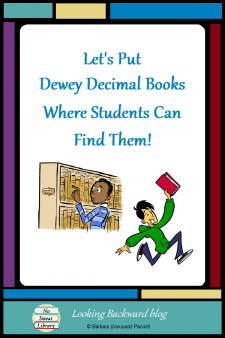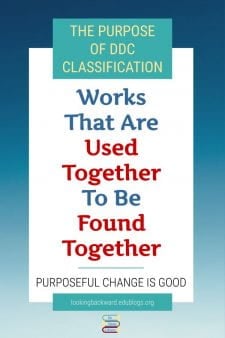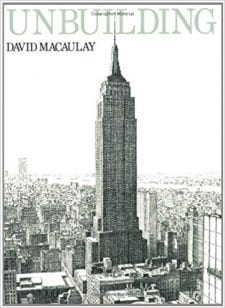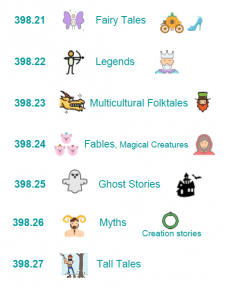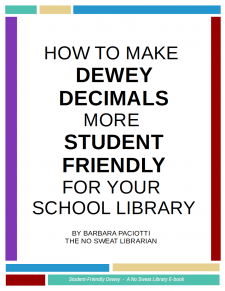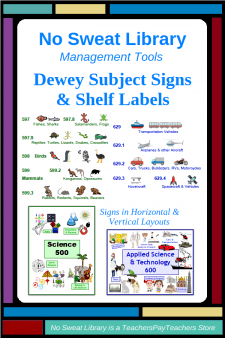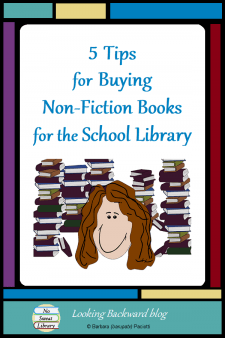 One of a School Librarians most pleasant tasks is purchasing books for students to read. Many school librarians are former English Language Arts teachers, so choosing fiction books is relatively easy. I, however, am a former science and social studies teacher, so I seek lots of input from my ELA teachers when choosing fiction titles for my middle school library.
One of a School Librarians most pleasant tasks is purchasing books for students to read. Many school librarians are former English Language Arts teachers, so choosing fiction books is relatively easy. I, however, am a former science and social studies teacher, so I seek lots of input from my ELA teachers when choosing fiction titles for my middle school library.
On the other hand, many school librarians are intimidated by choosing non-fiction titles for their students. While Non-fiction is my strength, it isn’t just my background that helps me choose quality non-fiction for the school library. Allow me to share these 5 tips for buying non-fiction books to guide your nonfiction collection development.
TIP #1 – USE MULTI-PUBLISHER BOOK JOBBERS
I find it’s OK to buy fiction titles unseen because the format is standard and there are reliable book reviews for the content. That’s not the case for non-fiction. There is such wide variation in non-fiction books by format, by publisher, by grade level, and by topic, so regardless of book reviews, we need to see the book and page through it to be sure it will engage our students and serve the purpose for which we need it. Holding a non-fiction book in our hands, looking at the table of contents, flipping through the pages can give any school librarian a pretty good idea of content suitability, reading level, and appeal for students.
As a second-year librarian this became clear to me while analyzing my 900s country books. Of the 4 different—and all reputable—publishers, one was far too elementary for middle school (few pages and low reading level) and one was far too advanced for middle school (too many text-heavy pages). The other two were comparable in length and reading level, with shorter paragraphs and colorful illustrations spread throughout the book. I knew right away which ones were most useful and would be checked out more frequently.
 Coincidentally, a book jobber representative phoned me at that time. A book jobber handles several publishers and the rep brings books out to the school so I can see them and select exactly what I want. When she arrived toting 3 huge carts of middle school non-fiction books, I knew I’d made the right decision, and vowed to invite other book jobber reps for non-fiction purchases.
Coincidentally, a book jobber representative phoned me at that time. A book jobber handles several publishers and the rep brings books out to the school so I can see them and select exactly what I want. When she arrived toting 3 huge carts of middle school non-fiction books, I knew I’d made the right decision, and vowed to invite other book jobber reps for non-fiction purchases.
After a few years experience with several district-approved book jobbers, I settled on two who provided the widest selection of middle school titles and offered reliable processing and speedy delivery.
TIP #2 – FOCUS ON JUST A FEW TOPICS
Book jobber representatives have access to hundreds of new and recent titles, on a wide range of subjects, but there’s a limit to how much they can transport—or how many books we can look through at one sitting! Before scheduling a visit, survey your collection and target 3-5 specific topical areas for which you need books, and relay those topics to your jobber. This allows them to bring as much as possible for those topics, along with the newest publications and a few topics other middle school librarians have chosen.
For my first book jobber appointment, I focused on country books (for 6g social studies), energy resources (for 6g science), and the Civil War (for 8g U.S.History). These were topics that had been requested for projects the year before and we needed more books. Additionally, I added biographies and careers because students had been asking for them.
I’m always amazed at the ample range of materials my reps show me and, because I focus on both curriculum needs and student requests, my choices are valuable additions for many, many years. With just 2 book jobbers, I’m able to address 6-8 different topical areas of the library collection every year.
TIP #3 – SET A LIMIT ON HOW MUCH TO SPEND
If your collection is like mine, it’s about 60% non-fiction and 40% fiction, so I allocate book budget funds the same way. Keep in mind that the quantity of books purchased won’t be the same: non-fiction books are pricier due to illustrations and better bindings. Since non-fiction tends to be useful over a longer time period than fiction, weeding is less extensive and the collection balance stays about the same.
Book jobber reps like to have a ballpark figure of your probable purchase to help them decide what to show you. It’s important to keep the spending ceiling in mind, because so many wonderful titles make it easy to go overboard. My reps create a computerized booklist and give me a running total. Some books are clearly “yes”, but I always have a “maybe” pile that I can add from if I still have have spending room.
Book jobbers rarely offer discounts like huge bid vendors, but I’ve learned how to save money on series books. The rep usually brings 1 or 2 of a series with a list of the rest. I’ll choose a couple enticing titles, then after the rep leaves, I can purchase additional titles in the series from my main bid vendor at a significant discount.
TIP #4 – ALLOW AMPLE TIME FOR SELECTION
When scheduling a book jobber, pick a slow day with no classes scheduled into the library. Sometimes that’s pretty difficult, so look ahead—even 3 or 4 weeks—to find a day that will probably have only incidental student visits. I’ve tried mornings and afternoons, and afternoons are better for me; I’ve gotten my “To Do’s” out of the way and am able to concentrate on choosing books.
For my first jobber meeting I figured about an hour. Big mistake—I spent more than 3 hours with her! Fortunately it was a slow afternoon with few interruptions, and we were able to get through most of those 3 carts of non-fiction books. Now I allow a 3-hour window as my default time period.
A few students do come into the library, so I invite them to look over the books. Not only do they appreciate having some input, they often offer choices I wasn’t considering. Students spread the news about the great books I’m buying, so when the order arrives students are already excited to check them out!
TIP #5 – CHOOSE QUALITY OVER PRICE
When you have a couple hundred books spread out on tables in front of you, it’s tempting to choose less expensive books in order to buy more within the spending limit. But, that undermines the whole purpose of using book jobbers and viewing each book individually. I always choose the book that best meets student and curricular needs.
First I look at the table of contents to be sure it has the topical coverage I’m looking for. Then I look for charts, graphs, and other illustrations that amplify the topic. I want the text in readable chunks with plenty of white space around the pages. I try to stay between 60 and 125 pages in length: fewer has too little content at a lower reading level and more has too much text and is too daunting for middle school readers. (The exception is books specifically for ELL and Special Education—those need to be shorter and with lower reading levels.)
I consider DK (formerly Dorling Kindersley) books an exemplar of non-fiction. They have a wealth of organized information in small chunks with beautiful illustrations, so they work well for casual reading and for research. School library publishers realized their appeal and now it’s rare to find a middle school non-fiction book that is packed with text-only titles. Still, we need to look at the features in each book to find the best quality for our students.
SOME FINAL DO’S AND DON’TS
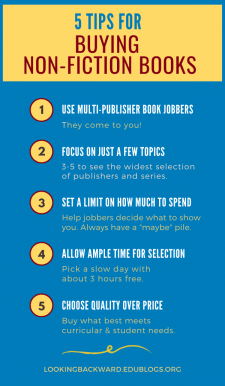 Most school districts send out an RFP (Request for Proposal) to dozens of vendors for district needs, and keep a list of approved bid vendors from whom they want us to purchase. The bid list for school library books and media should include both high volume vendors and book jobbers. It’s always best to go with those, since they offer perks for the expected high-volume purchases of a school district, such as discounts, free processing, and free shipping, plus the purchase order approval process is automatic.
Most school districts send out an RFP (Request for Proposal) to dozens of vendors for district needs, and keep a list of approved bid vendors from whom they want us to purchase. The bid list for school library books and media should include both high volume vendors and book jobbers. It’s always best to go with those, since they offer perks for the expected high-volume purchases of a school district, such as discounts, free processing, and free shipping, plus the purchase order approval process is automatic.
Service from various jobbers varies widely, so if you don’t want to “sample” each one, talk to other local librarians for recommendations. Here are some general recommendations on what to look for:
- Coordinate book jobbers to view many different publishers. Some crossover is OK, but it doesn’t make sense to look through the same books you’ve already seen from another rep.
linebreak - Don’t use anyone who doesn’t bring books. I had one lovely lady who brought me catalogs to look through—I can do that myself! The exception is for very narrow topical books. I used a small local jobber who only carried materials about our state; they earned my trust, so I’d buy books directly from their catalog.
linebreak - Expect high fill rates. Good book jobber reps want your business so they won’t haul around useless titles that aren’t available. Still, it’s not unusual to have a few titles that are delayed, but not more than about 10% of the amount spent.
linebreak - Processing is important. If they don’t do a good job, drop them. You don’t have time to redo and there are plenty of jobbers who offer good reliable processing.
I hope you find these tips helpful. Should you have questions about buying non-fiction books, leave a comment below and I’ll get back to you!


